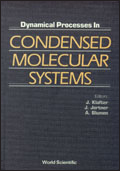Correlated Random Walks in Dynamically Disordered Systems
We discuss correlated hopping motion in a dynamically disordered environment. Particles of type A with hopping rate 1/τA diffuse in a background of B-particles with hopping rate 1/τB. Double occupancy of sites is forbidden. Without correlations the limit τB/τA→∞ corresponds to diffusion on a percolating network, while the case τB = τA is that of self-diffusion in a lattice gas. We consider also the effect of correlations. In general these will change the transition rate of the A-particle to the previously occupied site as compared to the rate for transitions to all other neighbouring sites. We calculate the frequency dependent conductivity for this model with arbitrary ratio of hopping rates and correlation strength. Results are reported for the two dimensional hexagonal lattice and the three dimensional face centered cubic lattice. We obtain our results from a generalization of the effective medium approximation for frozen percolating networks. We predict the appearance of new features in real and imaginary part of the conductivity as a result of correlations. Crossover behaviour resulting from the combined effect of disorder and correlations leads to apparent power laws Reσ(ω)~ωY with 0 < y < 1 over roughly one to two decades in frequency. In addition we find a crossover between a low frequency regime where the response is governed by the rearrangements in the geometry and a high frequency regime where the geometry appears frozen. We calculate the correlation factor for the d.c. limit and check our results against Monte Carlo simulations on the hexagonal and face centered cubic lattices for the case τ=1 and τ=∞. In all cases we find good agreement.


